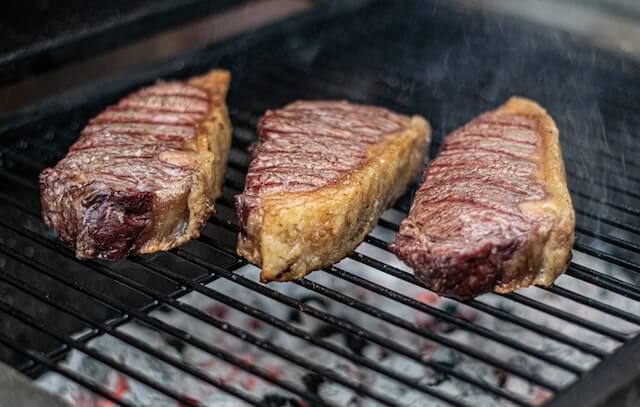There is no one who wants to mess up a steak at the grill. One reason is that the smell of a charred steak can make an awful dining experience. In addition, steaks can be expensive!

Grilled to Perfection
When I was asking Jennifer about steaks, and she explained my anxiety regarding grilling, her enthusiasm was able to raise some decibels. Jennifer immediately replied, “One of the things that I always tell people is that they don’t have to be intimidated by grilling a nice piece of steak.” She then explained it to me:
1. Begin by cleaning and preparing an Oiled Grill: More that cooking time, or spice rubs Clean grills make the difference in cooking fantastic steak (or any other food on the grill in fact.) Clean grill grates stop your steaks safe from sticking as they are turned. All you have to do is heat up your grill, then give it a thorough scrub using a grill brush that is heavy duty and then lightly rub the grill with vegetable oils. This will create an nonstick cooking surface.
2. The High-Heat Cooking Method: crank the heat! The grill should be at or near 450 degrees Fahrenheit, or enough hot to allow you to put your hands on the grill for a second. A high temperature will result in a nice sear as well as a crisp crust on the steaks.
3. Season the steak: Steaks don’t need anything to make them excellent. Just prior to grilling, rub the steaks lightly each side with olive oiland sprinkle them with some salt as well as pepper. If you’d like to get fancy, spice it up by adding chili powder and paprika as well as garlic powder, to your rub.
4. Turn Steak Once: Steaks can be so easy to cook that you just have to flip them only once. If you flip them too often, it could hinder the steaks from developing their tasty, well-seared and delicious crust (though there’s some controversy over this). The steaks are ready to flip once they’re released easily off the barbecue, much like when cooking meat cooked on the stove. Make use of pincher tongs to turn the meat, instead of piercing it with a fork from a barbecue -these forks simply pierce holes in the meat, tearing it, releasing its juices.
5. Cook until it’s done The exact cooking time will depend upon the size of your steak as well as what you prefer to cook it. This is the reason an temperature thermometer for meat is useful to have. It’s precise and doesn’t release lots of juice from the animal:
Rare: 125degF – 130degF
Medium-Rare: 130degF – 135degF
Medium: 140degF – 145degF
Well-Done: 160deg or higherJennifer states that she prefers to take the steaks off of the grill after they’re 5 degrees less than the desired temperature. The steaks continue to cook a little during the resting phase and removing it from the grill before it gets too hot prevents cooking the meat too long.
6. Relax the Steak The steak should be allowed to sit on the cutting table for around five minutes prior to cutting. This allows the juices to circulate through the meat. Cutting the steak before cutting it lets the juices escape and leaves your steak tasting dry.
Are you looking to increase the flavor in your beef? Jennifer is a fan of making compound butters and sauces to steaks right before serving. This could include anything from fresh herb minced transformed to Soft Butter or adding fancy ingredients like coffee and bourbon, which she incorporates into the recipe for her Cowboy T-Bone Steak recipe.
The grilling of steaks isn’t rocket science as you’ll see. As I listened to Jennifer’s words guidance, I realized that an important part of making the perfect cooked steak is paying attention and not rushing through the procedure. My new philosophy is: Grill confidently!